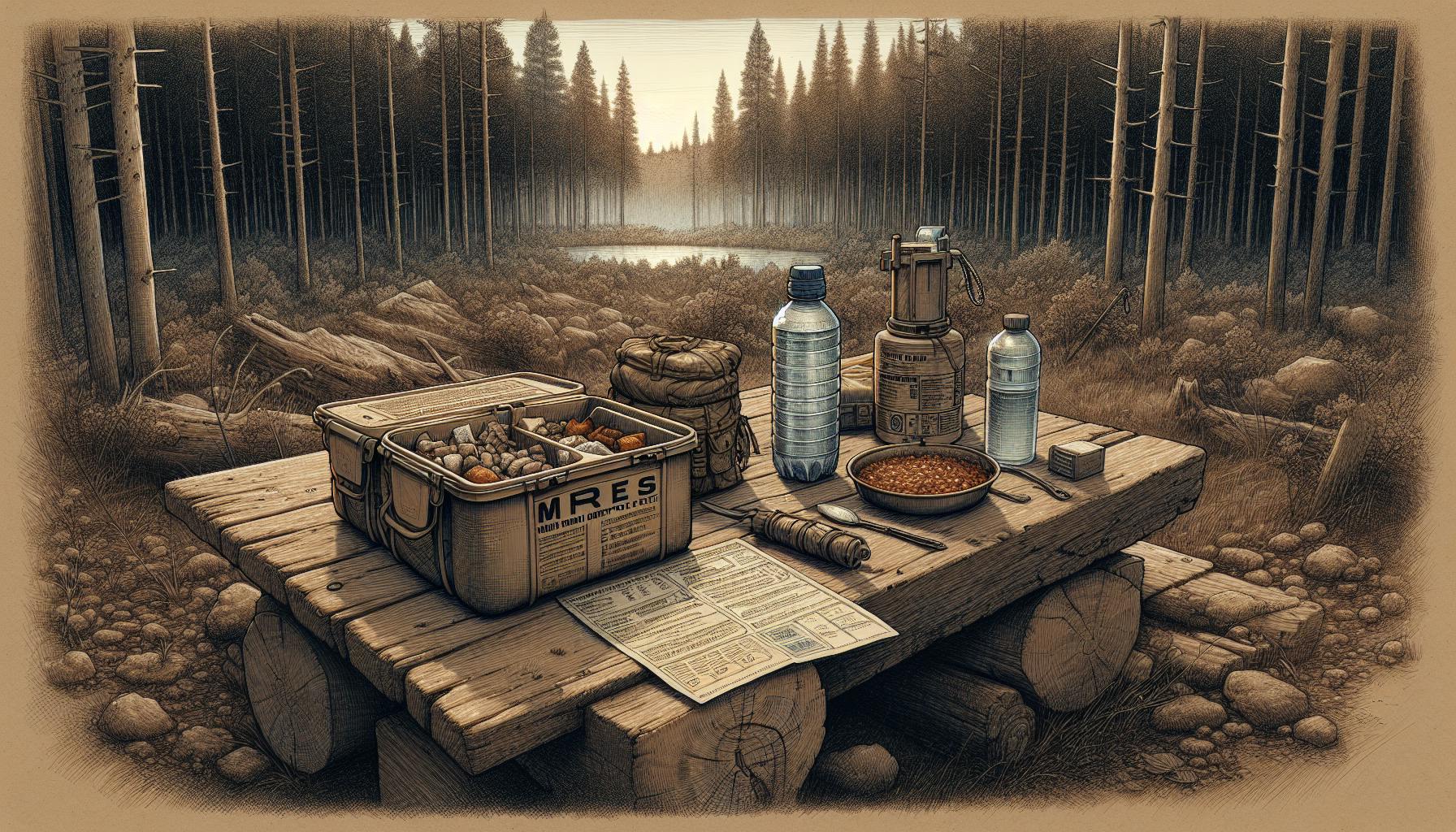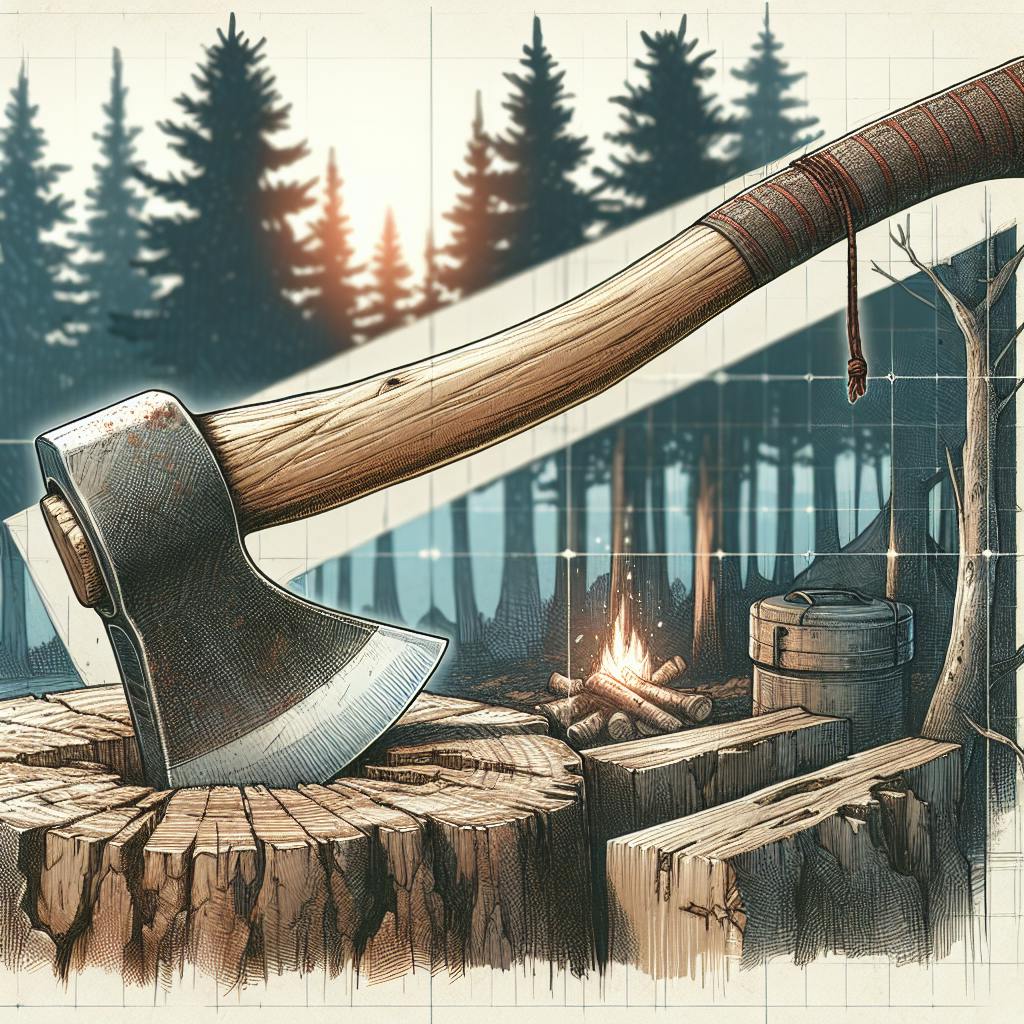Introduction to Char Cloth
Char cloth is a must-have fire starting material for any prepper's bug out bag or survival kit. It's made by burning natural fabric like cotton, linen or hemp in an oxygen-restricted environment. The end result is a lightweight, blackened cloth that catches a spark beautifully. With proper preparation and storage, char cloth can help you start a fire in even the wettest conditions. In this article, we'll teach you everything you need to know about making and using this versatile primitive fire starter.
What is Char Cloth and How is it Made?
Char cloth is made by heating natural fabric like cotton, linen or hemp in an oxygen-deprived environment. This process removes the volatile components of the fabric, leaving behind a lightweight, blackened carbon-rich material. Char cloth catches the smallest sparks and smolders slowly, making fire lighting possible even in damp conditions.
To make char cloth, place small scraps of fabric in an airtight metal container like an Altoids tin. Heat the tin for 10-15 minutes over hot coals, making sure not to let it burst into flame. Keeping oxygen out and avoiding actual combustion is crucial for producing high quality char cloth.
Choosing the Right Fabric
The best fabrics for char cloth are 100% natural plant-based textiles like cotton, linen and hemp. Cotton's high cellulose content and linen's long fibers make them ideal for charring into a slow-burning ember-catching material. On the other hand, synthetic fabrics like polyester and nylon will simply melt rather than char properly, as they are derived from petrochemicals rather than plant cellulose. Densely woven fabrics like canvas or denim work better than loose knits or mesh, as they have more material to transform into an effective coal. Fabric scraps, old t-shirts, jeans, towels etc. are great sources of free char cloth material. WeLovePrepping.com offers high-quality 100% cotton fabrics in various weights that are perfect for making char cloth.
Charring the Fabric
Place small fabric squares or strips in a tin with a tight fitting lid like an Altoids tin. Punch a small hole in the lid so gases can escape without too much oxygen getting in. Limiting oxygen is key to producing proper char cloth rather than just burnt fabric. Heat the tin for at least 10-15 minutes buried in hot campfire coals. You can also use a stove, grill, or even a torch to char the fabric if no fire is available. Avoid letting the tin actually ignite or burn with flames - this will destroy the cloth inside by converting it completely to ash rather than charcoal. Proper char cloth will be blackened but still retain some fabric structure.
Testing and Storing
When done, open the tin carefully as the contents may still be hot. The cloth inside should be blackened and lightweight. Test a piece by trying to light it with a spark - it should smolder slowly for 30-60 seconds before igniting. This smoldering time is what makes char cloth an ideal tinder. Store char cloth in small airtight containers with desiccant packs to prevent moisture ruining an entire batch if one container fails. Old pill bottles, 35mm film canisters or small mason jars all work well for storage. Consider charring and storing char cloth in amounts of 10-20 strips per container.
How to Use Char Cloth Effectively
Char cloth excels as a fire starter because it catches the smallest sparks and smolders slowly. Use it as tinder by placing a piece on top of your fire lay and directing sparks onto it with a ferro rod at a 45 degree angle to shower sparks. Can also be used with flint & steel by wrapping char cloth around the steel before striking. Have more char cloth ready to place on the ember once you get an initial coal. The slow smolder gives you plenty of time to add kindling and gently blow the coal into flame.
Catches Sparks Easily
The carbonized structure of char cloth makes it excellent tinder for sparks. It will readily catch a shower of sparks from a ferrocerium rod or flint & steel. The slow combustion gives you time to direct sparks without extinguishing the ember.
Smolders Slowly
Unlike paper or leaves, char cloth smolders slowly for 30-60 seconds once ignited before bursting into open flame. This crucially buys you time to assemble your fire lay before the ember dies out. The slow burn also means you can carefully transport the smoldering char cloth to your tinder bundle if needed.
Repels Moisture
Char cloth repels water due to its hydrophobic carbonized structure. It has been demonstrated to work when soaked or even used in rainy conditions when other tinder fails to ignite. The water-resistant properties of char cloth give it an advantage in damp or wet weather.
Char Cloth vs. Other Fire Starters
Char cloth can be used in conjunction with other common fire starters for best results. It is more effective than paper, leaves or bark as it smolders slowly once lit rather than immediately igniting. Lighter and easier to pack than wood shavings, fatwood or wax-filled cotton balls. Pairs well with petroleum-soaked tinder like vaseline gauze when extra ignition power is needed.
Paper
Paper ignites quickly from sparks but also burns out fast. Doesn't smolder well and leaves you little time to build the fire up before the tinder is consumed. Paper tinder works when perfectly dry but becomes useless when damp.
Cotton Balls
Cotton balls with petroleum jelly burn hot and fast. While they work well even when wet, the rapid burn gives minimal time to arrange tinder and kindling before the tinder is gone. Cotton balls are also bulky to carry compared to lightweight char cloth.
Fatwood
Fatwood shavings burn long and slow once ignited. However, fatwood requires much more preparation to shave down and needs larger sparks or flame to initially catch. Fatwood shavings don't readily accept sparks from a ferro rod. Overall fatwood is bulkier and messier to collect and carry than neatly packaged char cloth.
Conclusion
Char cloth is an invaluable primitive fire starter for preppers and survivalists. Making your own char cloth from fabric scraps is simple and requires minimal equipment - just an airtight metal container and heat source. The ability to smolder slowly from the smallest sparks makes char cloth ideal tinder. Store plenty of dry char cloth in small batches in your bug out bag and survival kit for reliable fire starting. Used properly, char cloth can help get a fire going even in adverse conditions when other tinder fails to light. With its lightweight portability and moisture-resistant properties, char cloth is a versatile fire-making asset every prepper should have on hand.


